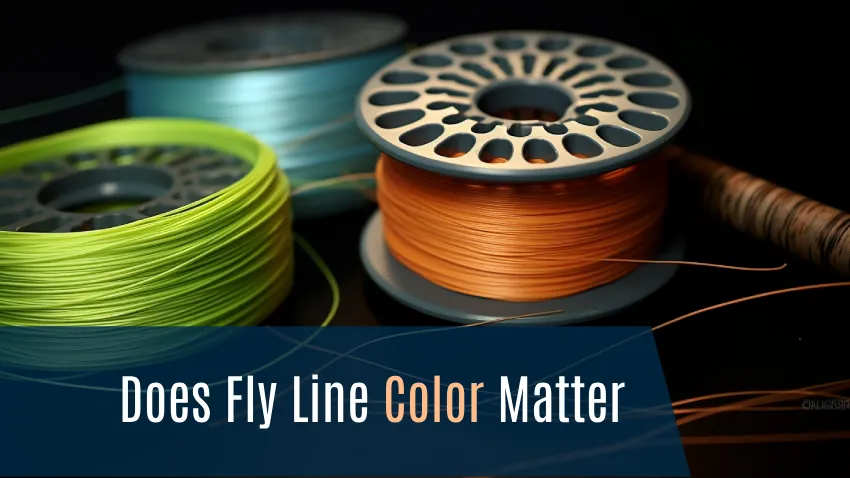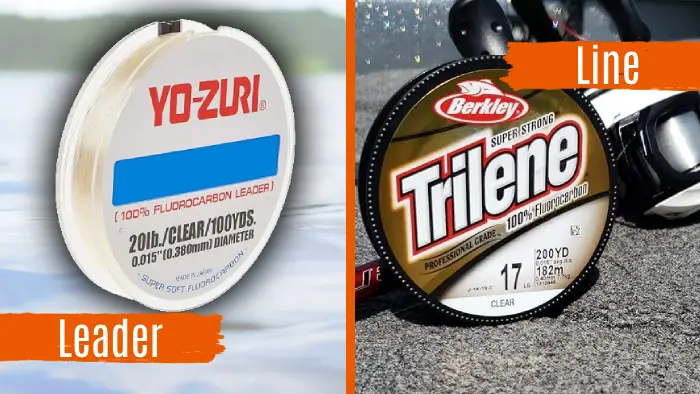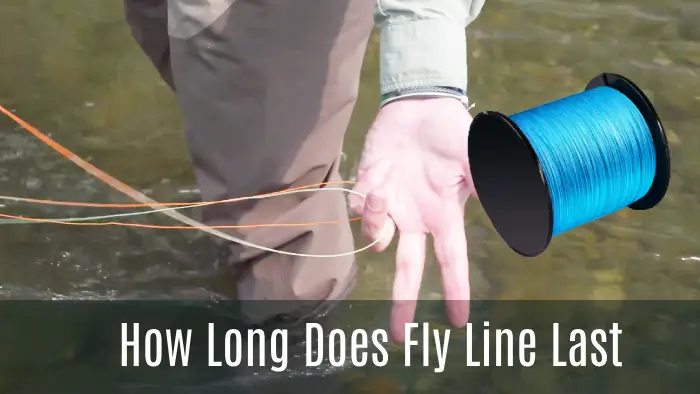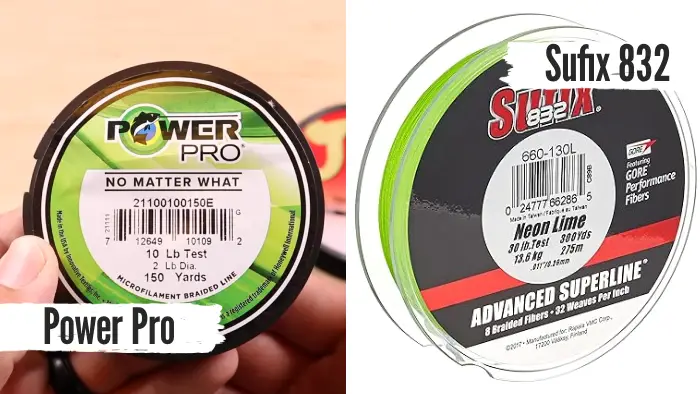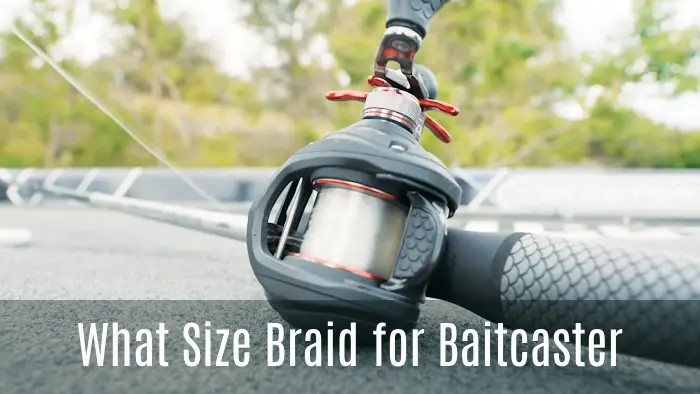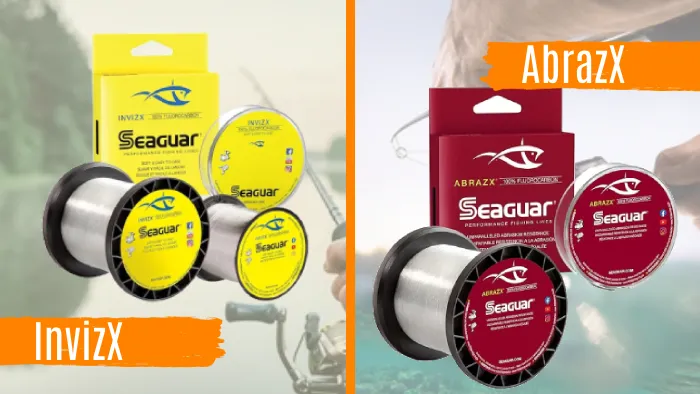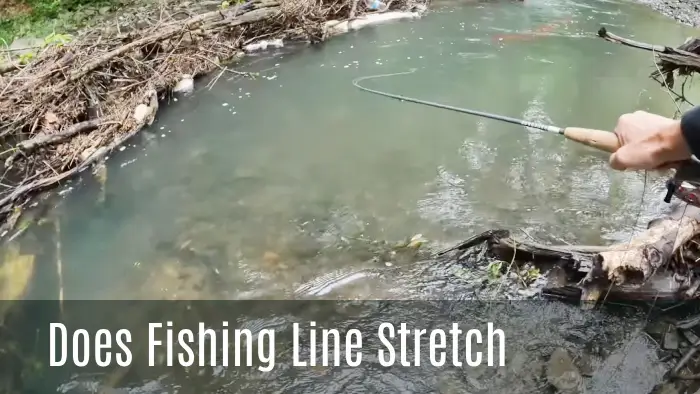Does Fly Line Color Matter When Fly Fishing: 9 Situations
A fly fishing line is an important component of your equipment when fly fishing. It’s what gets your fly out into the water and in front of the fish you’re targeting.
While it’s easy to concentrate on things like the fly pattern, rod length, and other tackle, have you ever stopped and thought about the color of your fly line, and does it matter?
In general, the color of your fly line doesn’t matter much if your casting and presentation skills are solid. But, there are situations where line color matters, particularly in scenarios where angler visibility of the line is essential.
We will discuss in detail in what circumstances fly line color matters, so you can determine what color will be most beneficial for your next fly fishing expedition.
Does Fly Line Color Matter: Situations Where It Counts
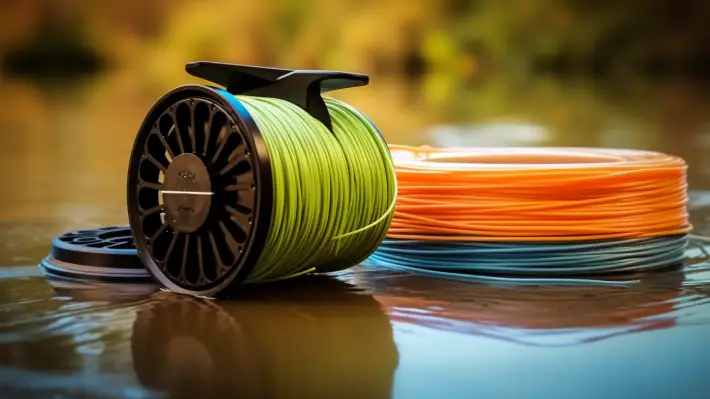
During fly fishing, the color of your fly line can make a difference in certain situations.
- Flat water and sight-fishing
- Reducing spooking in clear water
- Saltwater fishing
- Swinging flies with Spey rods
- Reducing glare and shadow
- Muddy or tannic Waters
- Indicator fishing
- Reducing false casts
- Fly line camouflage
Now, check out the situations where the color of your fly line counts and can make a difference in your fly fishing success.
1. Flat Water and Sight-Fishing
Fly line color can be especially significant in situations where you’re fishing in calm, flat waters and employing sight-fishing techniques.
In these conditions, fish are often close to the surface, making them more likely to notice any anomalies, including the color of your fly line. To avoid spooking the trout, it’s important to select a line color that appears natural and doesn’t stand out.
2. Reducing Spooking in Clear Water
When fishing in clear, pristine waters, Fly line color can play a crucial role as it affects the line’s visibility to the fish. If the line is too bright or sparkling, it can catch the fish’s attention, and they might get spooked. This can reduce the likelihood of catching the fish significantly.
To avoid this, you should opt for clear-tip intermediate sink-tip lines designed to minimize surface depression, which can help reduce visibility and improve fishing success.
These lines are specifically designed to match the water’s clarity, making them an excellent choice for clear water conditions. It’s worth considering that the clearer the water, the more transparent the line should be.
3. Saltwater Fishing
In saltwater fishing, the color of your fly line matters in situations where visibility is crucial for tracking and managing your fly.
When fishing in saltwater environments, you often encounter larger and more alert fish, making the visibility of your fly line a primary concern. These environments can have varying light conditions and watercolors, making it challenging to track your line and manage your fly effectively.
Choosing a fly line color that contrasts with the background enhances your ability to see the line and make accurate casts. This is particularly important when fishing in clear water or targeting species known to be skittish.
A highly visible fly line increases your chances of success by allowing you to maintain control and accuracy throughout your saltwater fishing experience.
4. Swinging Flies With Spey Rods
When swinging flies with spey rods, you need to consider the importance of fly line color for optimal presentation control.
The ability to see and manage the line is crucial in controlling the movement and placement of the fly. A bright or distinct line color can greatly assist in tracking the line’s movement and effectively managing the swing.
This visibility boosts your confidence as an angler and enhances your ability to control the fly’s presentation. By tracking the line easily, you can adjust the speed and depth of the swing, ensuring that the fly is presented in a manner that entices the fish to strike.
5. Reducing Glare and Shadow
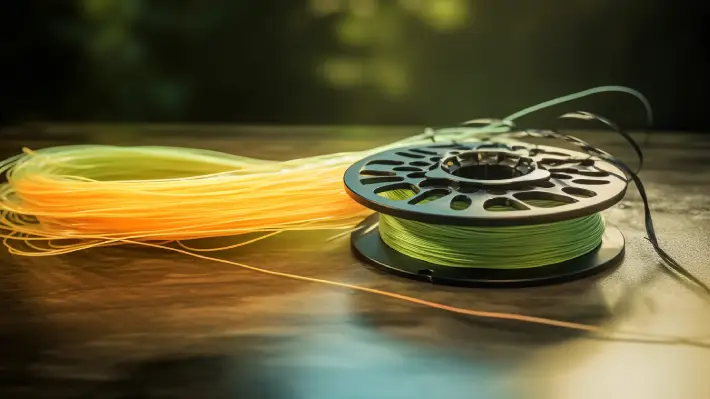
When considering the reduction of glare and shadow, the color of your fly line becomes significant in certain lighting conditions.
In situations where there’s strong sunlight or glare on the water, a less reflective or flashy fly line can be advantageous. By choosing a less conspicuous line color, you can minimize disturbances that might otherwise spook fish.
The goal is to reduce the amount of light that’s reflected off the line, making it less visible to the fish. This can be especially important when fishing in clear water or when targeting wary species.
If you choose a fly line color that blends in with the surroundings or matches the color of the water, you’ll reduce the chance of the fish spotting it.
6. Muddy or Tannic Waters
To effectively blend with the murky or tannic waters, selecting a flyline color that matches the surrounding environment and minimizes visibility to the fish is crucial. In these conditions, the color of your fly line can significantly impact your success as a fly fisherman.
Muddy or tannic waters can reduce visibility, making it harder for fish to distinguish between objects in their environment. By choosing a fly line color that closely resembles the color of the water, you can reduce the chances of spooking the fish.
Brown or olive lines are particularly effective in these situations, as they blend well with the natural hues of tannic or muddy waters. Utilizing the right fly line color can increase your chances of fooling the fish and achieving a successful catch.
7. Indicator Fishing
Regarding indicator fishing, your fly line’s color can significantly affect your success on the water. The purpose of using an indicator is to detect strikes, and having a line color that provides good visibility to the angler is crucial.
Bright or contrasting line colors, such as chartreuse or orange, can make it easier for you to see the movement of the indicator and detect even the most subtle strikes.
In situations where the water conditions are clear, a high-visibility line can greatly enhance your ability to fish effectively with indicators. It lets you maintain a visual connection with the indicator, increasing your chances of hooking into fish.
8. Reducing False Casts
In situations where false casting is a frequent occurrence, the visibility of your fly line becomes crucial. Opting for bright or highly visible line colors can greatly assist you in tracking the line’s movement and controlling your cast.
This is particularly important when you need to make real-time adjustments or when casting to rising fish, where timing is of the essence.
9. Fly Line Camouflage
In situations where fish are easily spooked, the fly line’s color can make a significant difference in its visibility and ultimately impact your success as a fly fisherman. When fish are cautious, they become hyper-aware of any potential threats, including the presence of your fly line.
This is where the concept of fly-line camouflage comes into play. Camouflage-themed fly lines, despite not matching specific water conditions, are designed with dull, drab colors to minimize their overall visibility.
By blending in with the natural environment, these lines reduce the chances of alarming the fish and increase your chances of a successful catch. While not essential in all fishing situations, fly line camouflage can be particularly advantageous when targeting skittish fish in clear, calm waters.
What line color is best for trout fishing in clear water?
To maximize your chances of success when trout fishing in clear water, consider the ideal line color for optimal visibility to the fish. In these conditions, choosing natural and subdued colors such as gray, green, or blue is best.
These colors blend with the surroundings and reduce the risk of spooking fish, which can be particularly sensitive in clear water.
However, brighter colors like red or orange can be effective if you’re fishing on the surface. They provide excellent visibility to both you and the fish. Combinations like chartreuse and white or red and white offer high contrast and work well under different lighting conditions.
Additionally, black is the most visible color in most conditions and can be particularly effective for night fishing.
So, when fishing for trout in clear waters, consider the specific conditions and the depth at which you’re fishing to choose the most suitable line color that maximizes your chances of success.
Can fish see the color of the fly line above the water’s surface?
Fish can perceive the color of the fly line when it is above the water’s surface, but the extent to which this matters varies. While fish can see colors, they are more sensitive to other factors such as shadows, movement, and the presentation of the fly.
In some situations, like on calm waters or when fishing for selective trout, the color of the fly line can potentially spook fish. However, in many cases, the angler’s shadow and the way the line lands in the water are more noticeable to fish.
Line color may only matter at the margins of a fish’s field of vision, and even then, it’s more of a presentation issue than a color issue.
If fish consistently see your fly line, it often indicates that other presentation aspects need improvement, and longer leaders and better casts can be more effective solutions.
Utilize the Right Fly Line Color for Successful Fly Fishing
The color of your fly line can indeed matter in specific situations, impacting your fly fishing success. When fishing in clear, pristine environments or in calm, flat waters, choosing the right line color can make the difference between spooking fish and landing them successfully.
In scenarios where visibility is crucial, such as saltwater fishing or swinging flies with spey rods, a bright and contrasting line color enhances your ability to track and manage your fly effectively.
Understanding when and why fly line color matters can help you make informed decisions and tailor your gear to maximize your fishing experience.

